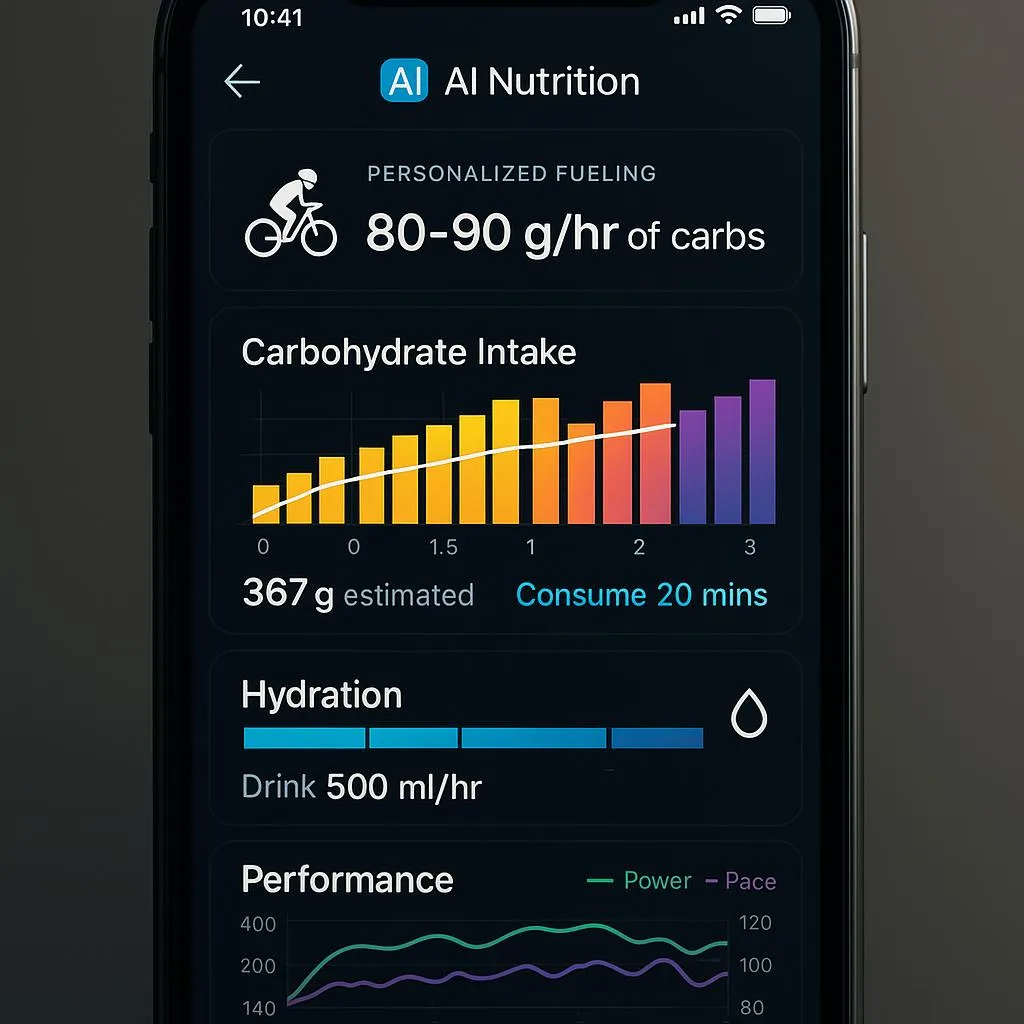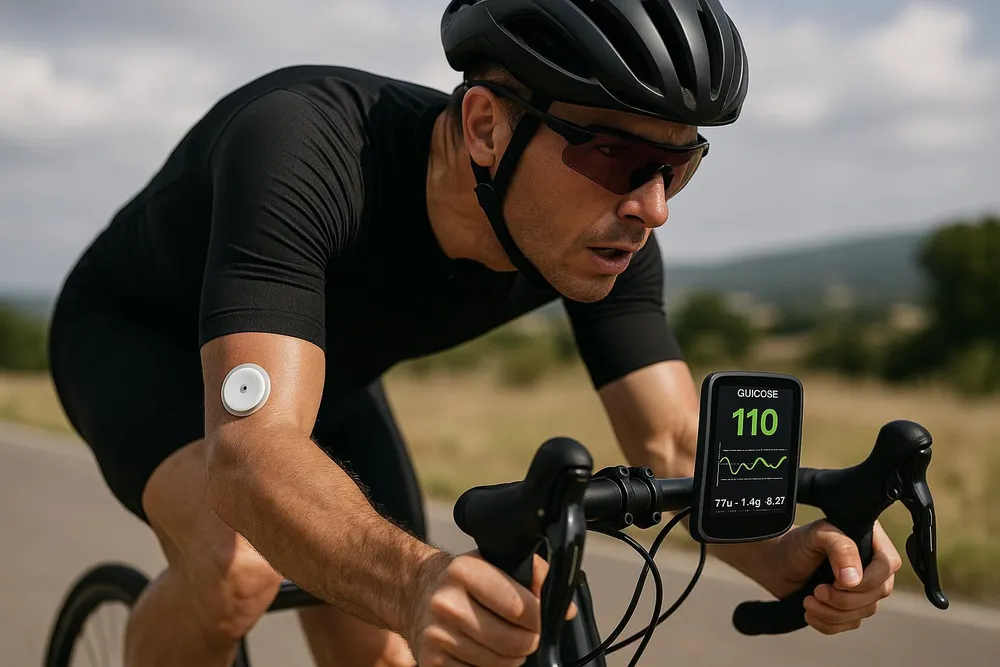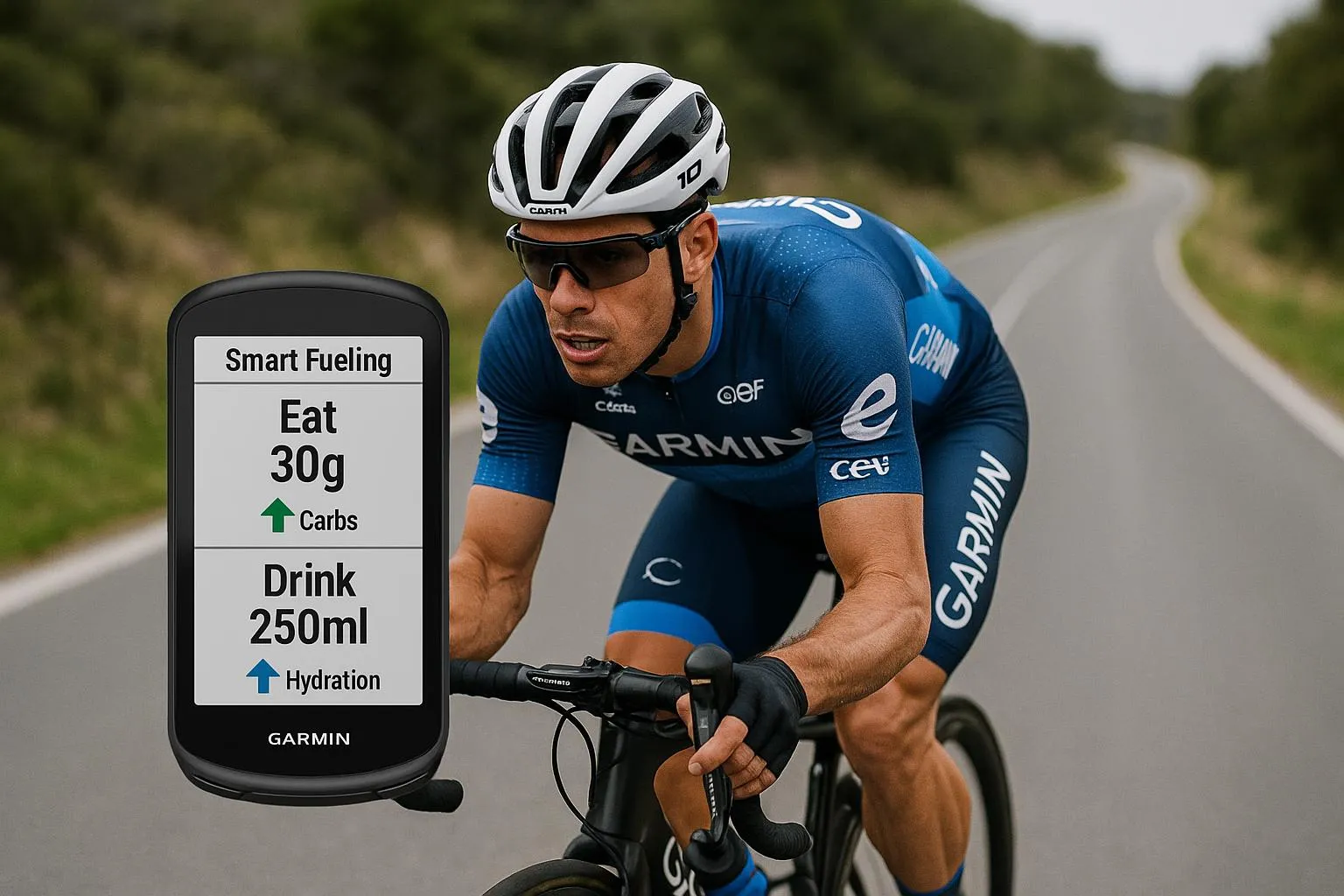The world of competitive cycling has entered an unprecedented era of data-driven performance optimization, where artificial intelligence and advanced monitoring systems are revolutionizing how athletes fuel their bodies for peak performance. Professional cycling teams now employ sophisticated nutrition technology platforms that provide real-time guidance on carbohydrate intake, hydration strategies, and recovery protocols, creating competitive advantages that were unimaginable just a few years ago. This technological revolution extends far beyond professional racing, with consumer-grade systems now offering amateur cyclists access to the same scientific principles and optimization strategies that power elite performance.
The transformation from basic sports nutrition to sophisticated fueling technology represents one of the most significant developments in cycling performance science. Modern systems integrate physiological monitoring, environmental data, and machine learning algorithms to provide personalized nutrition guidance that adapts in real-time to changing conditions and individual responses. These innovations have proven so effective that they’re rapidly becoming standard equipment for serious cyclists at all levels, fundamentally changing how we approach nutrition for endurance performance.
Understanding and implementing these nutrition technologies isn’t just about following the latest trends—it’s about unlocking new levels of performance and endurance that were previously limited by guesswork and generic nutrition protocols. As these systems become more accessible and user-friendly, they’re democratizing access to elite-level nutrition science and creating opportunities for cyclists to optimize their fueling strategies with unprecedented precision and effectiveness.
Smart Fueling Alert Systems
Garmin Smart Fueling Technology
Garmin’s revolutionary Smart Fueling Alert system represents a breakthrough in real-time nutrition guidance for cyclists, utilizing sophisticated algorithms to provide science-based recommendations for carbohydrate and fluid intake during rides [1]. This technology integrates multiple data streams including heart rate, power output, environmental conditions, and individual physiological characteristics to calculate optimal fueling strategies that adapt continuously throughout a ride or race.
The system’s foundation rests on extensive research into exercise physiology and nutrition science, incorporating findings from leading sports science institutions and professional cycling teams. The algorithms consider factors such as exercise intensity, duration, ambient temperature, humidity levels, and individual sweat rates to provide personalized recommendations that optimize both performance and gastrointestinal comfort. This level of sophistication represents a dramatic advancement over traditional nutrition guidelines that relied on generic recommendations based on body weight and exercise duration.
Real-world implementation of Smart Fueling technology has demonstrated significant improvements in endurance performance and reduced incidence of nutrition-related performance decrements. Professional cyclists using these systems report more consistent energy levels throughout long rides and races, with fewer instances of the energy crashes that can result from inadequate or poorly timed nutrition intake. The technology’s ability to provide proactive guidance before energy stores become depleted has proven particularly valuable during ultra-endurance events and multi-stage races.
The integration with existing cycling computer ecosystems makes Smart Fueling technology accessible and practical for cyclists who already use power meters and heart rate monitors. The system provides discrete alerts and recommendations without overwhelming riders with excessive information, maintaining focus on performance while ensuring optimal nutrition timing. This balance between comprehensive guidance and practical usability has contributed to widespread adoption among both professional and amateur cyclists.
Personalized Nutrition Algorithms
The development of personalized nutrition algorithms represents a fundamental shift from one-size-fits-all nutrition recommendations to individualized strategies that account for unique physiological characteristics and metabolic responses. These sophisticated systems utilize machine learning techniques to analyze patterns in individual performance data, nutrition intake, and physiological responses to develop increasingly accurate predictive models for optimal fueling strategies [2].
Advanced metabolic profiling techniques enable these systems to account for individual differences in carbohydrate absorption rates, fluid requirements, and electrolyte needs. The algorithms consider factors such as training history, body composition, genetic markers related to metabolism, and historical performance data to create personalized nutrition protocols that optimize both immediate performance and long-term adaptation. This individualized approach has proven particularly valuable for cyclists with specific dietary requirements or those who have experienced gastrointestinal issues with traditional nutrition strategies.
Environmental factor integration represents another crucial advancement in personalized nutrition technology. Modern systems automatically adjust recommendations based on real-time weather data, altitude changes, and other environmental conditions that affect fluid and electrolyte requirements. This dynamic adjustment capability ensures that nutrition strategies remain optimal even when conditions change dramatically during a ride, such as transitioning from cool morning temperatures to hot afternoon conditions or climbing to high altitude.
The continuous learning capabilities of these algorithms mean that recommendations become more accurate and personalized over time as the system accumulates more data about individual responses and preferences. This adaptive approach enables cyclists to refine their nutrition strategies progressively, identifying optimal timing, quantities, and types of nutrition that work best for their unique physiology and performance goals. The result is a highly personalized nutrition strategy that evolves and improves with continued use.

AI-Powered Nutrition Planning
Hexis Performance Nutrition Platform
The Hexis performance nutrition platform has emerged as the gold standard for professional cycling teams seeking to optimize their athletes’ fueling and recovery strategies through advanced data analytics and personalized nutrition planning [3]. This comprehensive system integrates training load data, physiological monitoring, and nutritional intake tracking to create sophisticated periodization strategies that align nutrition with training objectives and competitive demands.
Professional teams utilizing Hexis technology have reported significant improvements in both training adaptation and competitive performance, with athletes experiencing more consistent energy levels, improved recovery rates, and reduced incidence of illness and overtraining symptoms. The platform’s ability to correlate nutrition intake with performance outcomes enables teams to identify optimal fueling strategies for different types of training sessions and competitive scenarios, creating a scientific foundation for nutrition decision-making that was previously based largely on experience and intuition.
The system’s strength lies in its comprehensive approach to nutrition periodization, which considers not only immediate performance needs but also long-term adaptation and health objectives. Hexis algorithms analyze training load patterns, competition schedules, and individual physiological responses to create nutrition plans that support peak performance when needed while promoting optimal recovery and adaptation during training phases. This sophisticated approach to nutrition timing and composition has proven particularly valuable for stage race preparation and execution.
Integration with wearable technology and continuous monitoring devices enables Hexis to provide real-time feedback and adjustments to nutrition strategies based on physiological responses and changing circumstances. This dynamic capability ensures that nutrition plans remain optimal even when training loads change unexpectedly or when athletes face challenging environmental conditions or travel schedules that might otherwise compromise their nutrition strategies.
Machine Learning Applications
Machine learning applications in cycling nutrition represent the cutting edge of performance optimization technology, utilizing sophisticated algorithms to identify patterns and relationships in complex datasets that would be impossible for human analysis to detect [4]. These systems analyze vast amounts of data including training metrics, nutrition intake, physiological responses, environmental conditions, and performance outcomes to develop predictive models that can optimize nutrition strategies with unprecedented accuracy.
Pattern recognition capabilities enable machine learning systems to identify subtle relationships between nutrition timing, composition, and performance outcomes that might not be apparent through traditional analysis methods. These systems can detect how individual athletes respond to different types of carbohydrates, identify optimal timing for nutrition intake relative to training intensity changes, and predict how environmental conditions will affect fluid and electrolyte requirements. This level of analytical sophistication provides insights that can significantly enhance performance optimization strategies.
Predictive modeling represents perhaps the most powerful application of machine learning in cycling nutrition, enabling systems to forecast optimal nutrition strategies for upcoming training sessions or competitions based on planned intensity, duration, environmental conditions, and individual physiological characteristics. These predictive capabilities allow cyclists to prepare nutrition strategies in advance, ensuring that optimal fueling products are available and that timing strategies are planned to maximize performance benefits.
The integration of machine learning with real-time monitoring creates opportunities for dynamic optimization that continuously refines nutrition strategies based on immediate physiological feedback. These systems can detect early signs of dehydration, energy depletion, or gastrointestinal distress and automatically adjust recommendations to prevent performance decrements before they occur. This proactive approach to nutrition management represents a significant advancement over reactive strategies that address problems only after they’ve already impacted performance.
Advanced Monitoring and Feedback Systems
Real-Time Metabolic Monitoring
Real-time metabolic monitoring technology has revolutionized the precision with which cyclists can track and optimize their physiological responses to nutrition and exercise interventions. Continuous glucose monitoring systems, originally developed for diabetes management, have been adapted for athletic applications to provide unprecedented insights into how nutrition intake affects blood glucose levels and energy availability during exercise [5].
These monitoring systems enable cyclists to observe directly how different types and timing of carbohydrate intake affect their metabolic responses, providing immediate feedback that can guide nutrition decisions during training and competition. The ability to see real-time glucose trends allows athletes to identify optimal timing for nutrition intake, recognize early signs of energy depletion, and adjust their fueling strategies to maintain stable energy levels throughout extended efforts.
Lactate threshold monitoring technology has evolved to provide continuous feedback on metabolic stress levels and the effectiveness of nutrition strategies in supporting high-intensity efforts. Modern lactate monitoring devices can track changes in lactate accumulation patterns that indicate whether nutrition intake is adequately supporting the metabolic demands of exercise intensity. This information enables cyclists to adjust their nutrition strategies in real-time to optimize their ability to sustain high-intensity efforts.
Hydration status monitoring through advanced wearable technology provides continuous feedback on fluid balance and electrolyte needs, enabling cyclists to optimize their hydration strategies based on real-time physiological data rather than relying on thirst sensations or predetermined schedules. These systems can detect early signs of dehydration and provide specific recommendations for fluid and electrolyte replacement that account for individual sweat rates and environmental conditions.
Performance Correlation Analytics
Performance correlation analytics represent a sophisticated approach to understanding the complex relationships between nutrition strategies and cycling performance outcomes. These systems analyze vast datasets that include nutrition intake timing and composition, physiological responses, environmental conditions, and performance metrics to identify patterns and relationships that can inform optimization strategies [6].
Advanced analytics platforms can correlate specific nutrition interventions with measurable performance outcomes such as power output sustainability, heart rate variability, perceived exertion levels, and recovery metrics. This analytical capability enables cyclists to identify which nutrition strategies provide the greatest performance benefits for their individual physiology and competitive objectives, moving beyond generic recommendations to truly personalized optimization approaches.
Recovery optimization through targeted nutrition represents another crucial application of performance correlation analytics. These systems can identify how different post-exercise nutrition strategies affect recovery markers such as muscle glycogen replenishment, protein synthesis rates, and inflammatory responses. This information enables cyclists to optimize their recovery nutrition to enhance adaptation and prepare more effectively for subsequent training sessions or competitive events.
Long-term performance trend analysis provides insights into how consistent application of optimized nutrition strategies affects training adaptation and competitive performance over extended periods. These systems can track how nutrition optimization contributes to improvements in power output, endurance capacity, and overall performance metrics, providing motivation and validation for continued adherence to evidence-based nutrition protocols.

Practical Implementation for Cyclists
Consumer-Grade Technology Access
The democratization of advanced nutrition technology has made sophisticated performance optimization tools accessible to amateur cyclists at unprecedented levels of affordability and ease of use. Consumer-grade smart devices and applications now offer many of the same analytical capabilities that were previously available only to professional teams with substantial budgets and dedicated support staff.
Smartphone applications integrated with wearable devices can provide real-time nutrition guidance that rivals professional-grade systems in accuracy and usefulness. These applications utilize the same scientific principles and algorithmic approaches as professional platforms while presenting information in user-friendly formats that don’t require extensive technical knowledge to implement effectively. The accessibility of these tools has created opportunities for amateur cyclists to optimize their nutrition strategies with scientific precision.
Affordable metabolic testing options have become available through consumer-grade devices and local sports science facilities, enabling cyclists to establish personalized baseline data for nutrition optimization. These testing protocols can identify individual carbohydrate absorption rates, optimal fueling strategies, and specific physiological responses that inform personalized nutrition recommendations. The availability of this testing has removed barriers that previously limited access to individualized nutrition optimization.
Integration with existing cycling technology ecosystems ensures that nutrition optimization tools work seamlessly with power meters, heart rate monitors, and cycling computers that many cyclists already own. This compatibility reduces the complexity and cost of implementing advanced nutrition strategies while maximizing the value of existing technology investments. The result is a comprehensive performance optimization system that builds on familiar tools and interfaces.
Training and Racing Applications
Effective implementation of nutrition technology requires understanding how to apply these tools across different training and racing scenarios to maximize their performance benefits. Pre-ride nutrition optimization involves using predictive algorithms and individual metabolic data to plan fueling strategies that ensure optimal energy availability from the start of exercise while minimizing the risk of gastrointestinal distress.
During-ride fueling strategies benefit significantly from real-time monitoring and feedback systems that can adjust recommendations based on changing conditions and physiological responses. These systems enable cyclists to maintain optimal energy levels throughout extended efforts while avoiding the common pitfalls of under-fueling or over-consuming nutrition products that can compromise performance or cause digestive issues.
Post-ride recovery nutrition protocols can be optimized using data from the completed session to ensure rapid glycogen replenishment, optimal protein synthesis, and effective preparation for subsequent training sessions. Advanced systems can analyze the metabolic demands of completed sessions and provide specific recommendations for recovery nutrition timing and composition that maximize adaptation benefits.
Competition-specific nutrition strategies require careful planning and testing to ensure that technology-guided approaches work effectively under the stress and unique demands of racing environments. Successful implementation involves practicing with nutrition technology during training sessions that simulate competitive conditions, ensuring that athletes are comfortable with the systems and confident in their recommendations when performance matters most.
Future of Cycling Nutrition Technology
Emerging Technologies
The future of cycling nutrition technology promises even more sophisticated and seamless integration of monitoring, analysis, and optimization capabilities. Nanotechnology applications in sports nutrition could enable the development of smart nutrition products that adapt their release characteristics based on physiological feedback, providing more precise control over nutrient timing and absorption rates.
Personalized supplement manufacturing represents another frontier in nutrition technology, with advances in biotechnology potentially enabling the creation of customized nutrition products tailored to individual genetic profiles, metabolic characteristics, and specific performance objectives. These personalized products could optimize not only macronutrient composition but also micronutrient profiles, bioactive compounds, and delivery mechanisms to maximize individual performance benefits.
Integration with genetic testing and biomarker analysis could provide even more sophisticated personalization of nutrition strategies based on individual genetic predispositions to different metabolic pathways, nutrient absorption characteristics, and performance responses. This level of personalization could enable nutrition optimization that accounts for fundamental individual differences in physiology and metabolism.
Artificial intelligence integration will likely become even more sophisticated, with AI systems potentially capable of providing real-time optimization that considers not only immediate physiological needs but also long-term training objectives, competitive schedules, and health considerations. These advanced AI systems could serve as virtual nutrition coaches that provide comprehensive guidance and support for all aspects of performance nutrition.
Professional Cycling Evolution
The evolution of nutrition technology in professional cycling continues to drive innovation and set new standards for performance optimization. Teams are increasingly investing in comprehensive nutrition technology platforms that integrate seamlessly with training monitoring, performance analysis, and competitive strategy development. This integration creates opportunities for nutrition optimization that considers not only individual athlete needs but also team tactics and competitive scenarios.
Regulatory considerations around nutrition technology use in professional cycling may require attention as these systems become more sophisticated and potentially provide competitive advantages that could affect the fairness of competition. The cycling governing bodies will need to consider how to regulate advanced nutrition technology while maintaining innovation incentives and ensuring that technological advantages don’t overwhelm the human elements of competitive cycling.
The accessibility and democratization of nutrition technology will likely continue to expand, with professional-grade systems becoming increasingly available to amateur cyclists and recreational riders. This democratization could significantly raise the overall level of performance optimization across all levels of cycling, creating new opportunities for performance improvement and competitive success.
Technology transfer from professional cycling to consumer markets will continue to accelerate, with innovations developed for elite athletes rapidly becoming available in consumer-grade products and applications. This technology transfer ensures that the benefits of advanced nutrition optimization continue to become more accessible and affordable for cyclists at all levels of the sport.
For more information on related cycling performance topics, explore these comprehensive guides: Cycling Performance and Health Optimization – Discover evidence-based strategies for maximizing cycling performance and health benefits, Smart Cycling Technology Revolution – Learn how connected devices and AI are transforming the cycling experience, Smart Cycling Technology Revolution – Understand how advanced recovery systems enhance performance and adaptation, Advanced Cycling Technology – Explore the latest innovations in cycling equipment and performance optimization, and Cycling for Mental Health – Learn about the psychological benefits of cycling and performance optimization.




